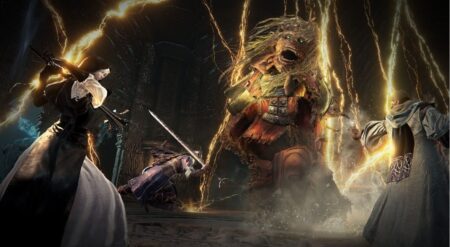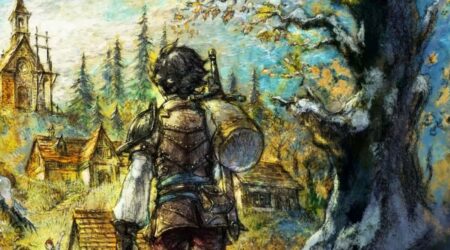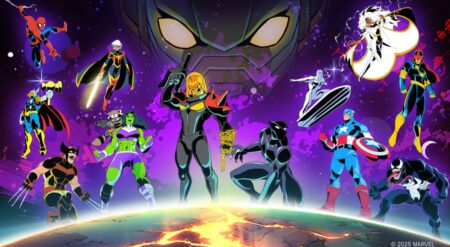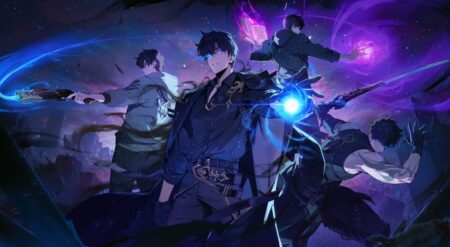One Avatar fun fact that is truly astounding is that Avatar: The Way of Water, which came out a year ago, has made more at the box office in 2023 than most of the Disney films released this year. It’s astounding how a property that continues nearly 20 years after its debut with only two films has the staying power that it does. But while I never truly understood the drive for it, I did know one thing. Pandora is a place that I want more of, that I want to explore, that I want to experience. Avatar: Frontiers of Pandora is an open-world action-adventure game that takes you across the Pandoran Western Frontiers, a never-before-seen continent of Pandora, previously unexplored in the franchise. Set after the battle of the Hallelujah Mountains (the first Avatar film) and exactly one year before the events of Avatar 2, this game switches focus from the Sullys to building out the world beyond his family.
Developed by Massive Entertainment and published by Ubisoft, Avatar: Frontiers of Pandora is about two things. The first is about showcasing the world of Pandora, its flora and fauna, and teaching the player the importance of protecting all and honoring the environment. The second element of the video game, which is still deeply connected to the first, is a direct confrontation of colonization by tasking the player with playing as a character who is stuck between worlds.
While Avatar 2 dealt with the concept of bouncing between the Sky People and the Na’vi for Jake Sully’s kids, who are children of an avatar for a human and a Na’vi, the video game is focused entirely on the prospective young Na’vi who are some of the last members of the Sarentu tribe. Ripped from their parents, they were forcibly assimilated into human (read Sky People) culture and raised to become ambassadors to the Na’vi. Their physical appearance would allow them to bridge the two beings, but their actual heritage—the songs, the language, the dress, the traditions—is strictly forbidden. Avatar: Frontiers of Pandora asserts this. The children weren’t saved or cared for. They were “saplings cut from their roots,” and it’s said repeatedly in no uncertain terms that they were abused and traumatized, and the RDA, the military, is absolutely the villain they seem to be. There is no forgiveness for their evils, either by you or the other three Na’vi clans you meet.
Rescued from The Ambassador Program (TAP) at an RDA facility, you begin to reconnect with your Na’vi identity. The Na’vi comment on your clothes, the human resistance fighters say insensitive remarks over and over when they see you, and you are stuck. But that liminal identity space never pushes you to accept the Sky People; instead, you become more accepted as you earn favor from the Clans. Now, as a resistance leader on the Western Frontier, your goal is to stop RDA’s land exploitation by infiltrating their drilling facilities and destroying them, releasing captured wildlife, and blowing up large balloons that are harming the natural cycles of Pandora. But restoring the environment through various combat styles (or stealth) is only one aspect of your role.
![]()
While confronting the RDA as you encounter them in the wild, you’re main goal is to unite the three clans: Aranhe of the Kinglor Forest, the Zeswa of the Upper Plains, and the Kame’tire Clan of the Clouded Forest. Each with their own cultures and leaders, your identity as a Sarentu, a clan lauded for their storytelling and dignitary skills, is central to connecting them all across the Western Frontier to push back the RDA from the Western Frontier for good.
All in all, this kind of narrative is cathartic, to say the least. While your enjoyment of the larger anti-colonialist motives and direct correlations to things like forced assimilation through school systems and kidnapping children of Native populations will be based on how much you think sci-fi and fantasy can tell those stories, for me, it all worked. Why? Because I remember the stories my mother told me and our family members told of having their cultures taken from them. I know the history of my family and how hard it is to reclaim what was beat out of you, and I know that it is a process that is never truly done. For me, being able to play someone taking direct action against those who harmed them and their people? Well, it’s what I needed at this exact time in my life.
Going further, Avatar: Frontiers of Pandora boasts a narrative that, unlike the films, has no care for the humans involved. Even those like Priya or Alex, the resistance touch points you have as you move through Western Frontier, or your old teacher Alma (often appearing in her Na’vi avatar form) are there to push their perspective. In fact, the weakest part of the game is the vapid side quests and time spent with the humans who are easily underwritten—though I can’t tell if that was by design to push you more toward the Na’vi. That said, the Na’vi culture is vibrant, and across each tribe, you’re invited to explore the way they live, grieve, and fight for a future.
![]()
In one side quest early on with the Aranhe, you are asked to meet a healer’s dying friend. In a simple quest that takes all of five minutes, you let the dying man know that you don’t know the words to the song you have held onto to remember your mother. But, you know the tune. As you hum for him, he talks about hearing the song from his grandmother, who loved a Sarentu Na’vi. And he passes.
It’s a small side quest, but it’s emblematic of the kinds of side quests you find with each clan. They are windows into who they are, not just as fighters but as a people. This game delves so deep into the worldbuilding of Avatar that it is able to push back against the broad and simple themes from James Cameron‘s scripts and push them further, gaining more empathy and more historical parallels that showed a deep care for narrative instead of just lifting struggles to use as window dressing.
As an additional element to the developing narrative, your reaction to the humans and being reintroduced into Na’vi culture is not the same as that of those who were rescued with you. Having all witnessed one of their own being gunned down as a child, Teylan, Nor, and Ri’nela are all grieving and fighting in their own ways.
Ri’nela, for one, is stuck on an island, never trusting the Sky People for what they put her through, but also struggling to find a place with the Na’vi. Nor, on the other hand, has fully embraced his identity and pushed back hard against the RDA but questions the inclusion of humans in the resistance, especially when some, like Alma, were instrumental in not just saving them but keeping them captured and traumatized at the same time. And there is Teylan, the youngest of the group. Teylan is scared of Pandora, sympathetic to humans, and just wants to use science to end fighting. Responding to what happened to you isn’t linear, and through conversations after key points in the campaign, you learn more and more about how your friends are recovering and fighting after all they’ve been through.
![]()
Na’vi culture is also deeply woven into everything you do. It’s present in how you traverse Pandora through the connections you make with your Irkan, which is a bond for life, and even how you thank your prey for their sacrifice while you hunt. On the latter, you are rewarded for two things when hunting Pandora’s fauna: getting a clean kill and mercy. The first describes hitting a weak spot, resulting in nearly a one-shot every time. The second, tied to the first, is about ensuring that you do not put the fauna through pain.
On that note, this requires that you use Na’vi weapons, which represent half of the available armory in Avatar: Frontiers of Pandora. Bow or spear-thrower hunting yields merciful hunting, leading to higher quality crafting materials and ingredients from your prey. On the other hand, you are punished for neglecting your bond to Pandora and its creatures through Eywa. If you use any of the RDA weapons (like an assault rifle or shotgun), the animal becomes “ruined” and yields no reward. They are destructive weapons, and you don’t get any advantage using them outside of fighting the RDA directly. Additionally, a restrictive inventory system, which was annoying at first until I realized the lesson in it, keeps you from overhunting or gathering.
Take what you need to craft, and no more is a core concept of the game, which is to be expected from a game that has you blowing up a pipeline any chance you get. While there are skill points to improve your carrying capacity of some items, you are always running on limited space. With a simple crafting and cooking system that only takes two to three items at a time, you also don’t need just keep taking from the land. Even your pouches dedicated to weapons resources like sticks for arrow making are restricted to a set amount. While the inventory system embodies the goals of the game and what you learn as you’re taught to hunt, cook, and craft, it does add a level of difficulty during combat.
On that note, switching between Na’vi and RDA weapons becomes a larger deal. While the bulk of my playthrough was done with the heavy bow, my favorite weapon in Avatar: Frontiers of Pandora, some fights with the RDA are so overwhelming that their weaponry is necessary in order to make it out alive after you run out of arrows. Only you can’t craft ammunition. Instead, it must be collected from storage crates in RDA areas, which poses its own difficulties.
![]()
While resource management in combat is one key thing to keep in mind as you journey across the Western Frontier, you also have the ability to use your Na’vi sense to fill out your Hunting Guide, which helps you find the locations of certain flora and fauna with directions and biome information. Your senses also help you find quest locations and important landmarks like Bellsprigs that permanently increase your health, Tarsyu Flowers, which grant you Ancestor Skills and two skill points, and Tarsyu Saplings, which give you one skill point. These are key to building and adapting your character to your play style. While it may be easy to max out one skill tree of the five offered, the best bet is to distribute your points across them all.
The Skilltrees offered Survivor, Warrior, Hunter, Rider, and Maker branches that, when filled out, do as you would expect from the titles. Survivor increases health, Warrior impacts combat with combatants, Hunter improves your chances of hunting the fauna of Pandora, Rider features points for your Ikran, and then Maker impacts your gathering and crafting skills. Each of these can be filled out as you see fit, but focusing on your play style, whether you’re stealthy or a giant battering ram, will make some trees more important than others.
Additionally, knowing that these skill points are readily available across the land of Pandora pushes the player to explore the world even more than they already would. Truthfully, the diversity of biomes, creatures, and plants is something special. Even before you have the ability to take advantage of the skies, the vast and vibrant world of the Western Frontier is one of the most beautiful things Massive Entertainment has ever done. When you do get your Ikran, it only becomes more so. The traversal mechanics take into account every aspect of the world around you. Being able to run, jump, and slide into combat as much as fluid as if you would move through the world out of combat is a wonder. Add in the aerial combat, and all traversal elements play to make the unpredictable open world regions even more intriguing.
The trees, the rocks, the mountains, the plants, all of it is able to interact with you as you make your way across Pandora. This tactile traversal experience only grows once you take to the skies and explore some of the more difficult terrain the world offers. Get ready to platform. With jet streams to speed up your flight time on your Ikran in the Upper Plains and small blue flowers that increase your speed on land, the way that the environment interacts with the traversal mechanics is exciting and kinetic.
![]()
Avatar: Frontiers of Pandora isn’t only beautiful one way either, but two. With a full day-night cycle and weather system, the different biomes you visit change based on the time of day. Like in the films, the bioluminescence of the environment changes the landscapes into something more ethereal in the nighttime. Glowing and gorgeous, the beauty of this game is something that also reacts to you. As you move through trees and leaves, run through water, and disturb herds, all of it reacts whimsically to you and around you. One of the most intriguing elements is the plants that attack when you’re too close, moving and responding to the world, and when you learn them, you can use them to fight RDA in the wild.
The grand and expansive nature of the world map that you use is astonishing, and when in the environment, it’s anything but frustrating with so many different ways to stray from the main path and explore the world around you. However, one of the game’s largest issues is its mapping system, which doesn’t always respond to your discoveries. The map is helpful for discovering locations of landmarks and special activities, with each of them marked for exploration, changing to a green check when hovered over after you’ve discovered it. That said, about two-thirds of the time, the item doesn’t reflect that it was found or completed despite being so, which can cause problems for the completionists out there or even those just looking for their next Apex Skill.
This map hiccup is one of the very few technical issues I experienced. With some standard clipping happening very few times throughout my time with Avatar: Frontiers of Pandora, there was truly nothing wrong—which is astonishing. Even the stability of playing co-op is some of the best I’ve experienced in a game, especially running with the listed requirements. In fact, completing the game co-op after an introductory first of around three hours is wonderfully done and also leans into the sense of community central to all of the Na’vi clans you meet.
Finally, it’s clear that exploration and immersion were top of mind for the developers. With a Guided Mode and an Exploration Mode, players can choose the experience they want. The former is a more traditional way of visualizing quests, allowing a bright blue light to appear on the map, visible through terrain when you use your Na’vi sense to know which direction to head. The latter, however, doesn’t give you any quest marker. Instead, you’re tasked with making your own waypoints by reading the description of the quest and then using the map to find the right area. For example, if a quest is located at a camp at the junction of a river and a lake, it will name the landmarks and rely on you to find them.
While most will probably use Guided mode for ease of navigating the quests, particularly if you’re trying to move quickly to progress the story, Exploration mode offers the player a fascinating level of immersion. With such a dynamic world, there are plenty of places to explore, plenty of paths to take, and a huge map to uncover both on the ground and in the sky.
![]()
Avatar: Frontiers of Pandora isn’t perfect, especially regarding the one-note human characters that are, more often than not, just plain annoying. That is outside of Alma, who is clearly trying her hardest to rectify her position in the stealing and forced assimilation of children. They range from annoying to flippant, and at times, you have to think it’s by design that all of their side quests are vapid because it allows you to understand why the Na’vi keep them at arm’s length. Despite the fantastic side quests, main quests, and just general conversation you hear in the wild from the Na’vi, it can’t outweigh the emptiness of the human characters. But maybe we are supposed to just go to the Resistance HQ to pick up RDA weaponry and then avoid the humans at all costs? It’s unclear.
The simplicity of humans also translates to the “hacking” you do with your SID, which allows you to get into specialty crates, shut down weaponry, and break into facilities. Additionally, despite boasting a crafting and cooking section, they are reductionist in a way that feels too repetitive. While I’ve blown up countless pipelines and even balloons in the sky, they each stay fresh regardless of how many times you repeat the game loop built around them. That said, the crafting and cooking feels like too little for the robust nature of the land you’re interacting with. Additionally, the designs you have access to are too simple and too few, which, with a storage system that isn’t accessible while at the table, makes it all feel empty in a game that is rich with tactile exploration and gameplay.
Even with its faults, Avatar: Frontiers of Pandora is a stunning visual achievement, much like the films on which it’s inspired. Only here, a rich narrative pulls you deep into the Na’vi and explores more tangible means of fighting back against a colonial power that offers a cathartic experience. The game truly delivers a powerful narrative that doesn’t bury itself in both sidesing the issue at hand. The military is bad, period. Destroying the land is evil, period. And both are tools of colonization meant to destroy cultures deemed less than humans. Blow up a pipeline, save an animal, and explore the vast world of Pandora. That’s a heck of a way to close out a year.
Originally published on 12/06/2023.
Avatar: Frontiers of Pandora
-
Rating - 8/108/10
TL; DR
Even with its faults, Avatar: Frontiers of Pandora is a stunning visual achievement, much like the films on which it’s inspired.






